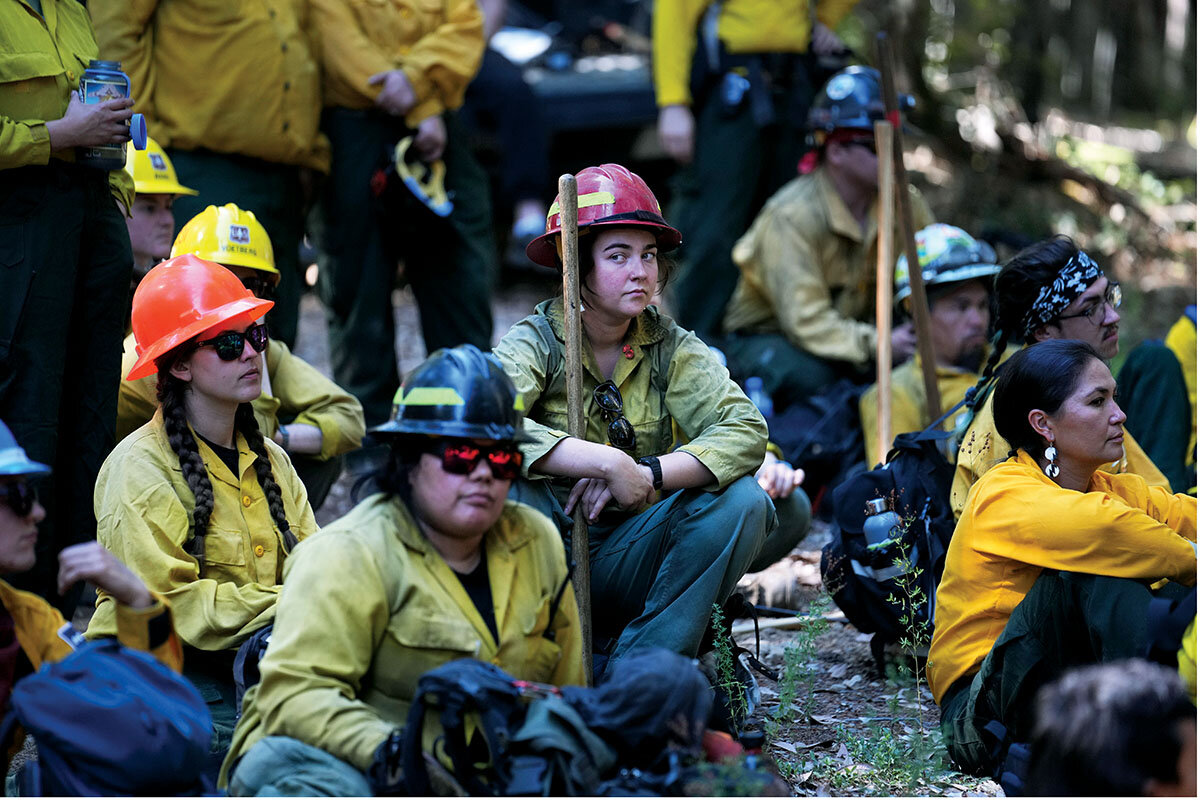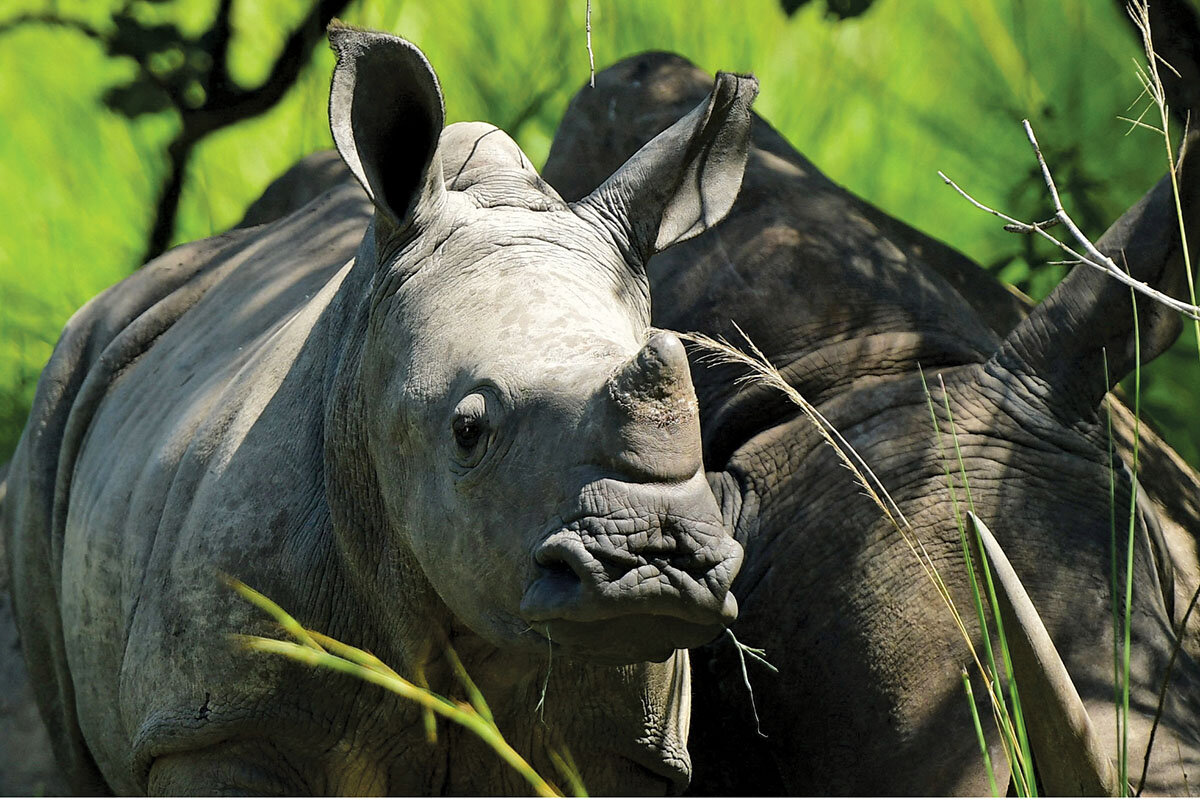Burn to preserve, and other forest practices, from Ecuador to California
Loading...
1. United States
Indigenous women are learning about controlled burns, based on traditional Native practices and current natural resource management. To close the gender gap in wildfire management, the first Prescribed Fire Training Exchange (TREX) targeting women was held in 2016. The Karuk Tribe hosted a session in the Klamath Mountains last October for 50 Indigenous women from the United States, Canada, and Australia.
Before its land was appropriated in the mid-19th century, the Karuk Tribe inhabited more than a million acres that spanned today’s Northern California into Oregon. Karuk women were charged with managing fire on lands closest to home.
Why We Wrote This
In our progress roundup, cooperation in the Americas between Indigenous peoples and authorities is preserving forests, from policies against logging to use of controlled burns. And in Uganda, some endangered species are rebounding after decades of increased conservation.
The U.S. recently returned 1,031 acres to the Karuk Tribe, and a co-stewardship agreement with the Forest Service gives Karuk residents more space – and authority – to manage land through controlled burns. The threat of unmanaged forests is not hypothetical: In 2020, the Slater Fire killed two people and destroyed 150 Karuk homes.
Indigenous trainees also learned about Native cultural burns to care for food resources and other plants. “Getting that fire on the ground is like starting to heal a scar,” said participant Annelia Hillman. “It helps our wounds heal through the first stage of fire.”
Source: The Arizona Republic
2. Ecuador
A new nature preserve protects 3,057,671 acres of Andean and Amazonian forests. Ecosystems protected by the Tarímiat Pujutaí Nuṉka Reserve range from cloud forests and sandstone plateaus to Amazonian lowlands and floodplain forests. There are more than a thousand species of birds as well as jaguars and spectacled bears that call the area home.
Nearly 200,000 people, mostly Indigenous, live in the province where the reserve is located. They had long expressed concern about the creeping influx of mining, logging, and cattle ranching in the region. The provincial government worked closely with nearly 900 residents of four Indigenous communities to ensure Native residents’ sustainable, ancestral use of one of the Amazon’s largest protected areas.
Sources: Mongabay, Nature and Culture International
3. France
It’s becoming easier for children to report abuse. The nonprofit Association Les Papillons installs and monitors mailboxes in schools and sports clubs for children to express problems they’re facing – ranging from bullying to sexual violence. The invitation to write creates a safe buffer for children who may not want to talk directly to an adult. About 21% of the letters point to physical abuse, and 7% sexual abuse, and the notes have led to arrests in alleged crimes that experts warn might otherwise have gone unreported. Children are encouraged to sign their names to facilitate follow-up by adults.
Laurent Boyet, a police officer who started the campaign, was a victim of sexual assault as a child. While expanding the number of mailboxes, he is also working to end the statute of limitations for child abuse. “I know from having been a victim myself: The aggressor forbids [children] to speak. ... But no one tells you that you cannot write. And writing, you can do it quietly in your bedroom.”
Sources: The Associated Press, Reasons to be Cheerful
4. Uganda
The populations of elephants, giraffes, rhinos, and other vulnerable and endangered species in Uganda are on the rebound. After northern white and eastern black rhinos were hunted into local extinction in the early 1980s, a charity reintroduced four rhinos in 2005, and through breeding in a private sanctuary there are now 32. Elephants are up about 400% to 7,975, and giraffes grew nearly sixfold to 2,072 – both due to increased conservation efforts over four decades, according to the Uganda Wildlife Authority (UWA).
Political conflict and poaching under a lack of law enforcement led to massive drops in animal populations from the 1960s to the 1980s. The International Union for Conservation of Nature called for more protection of wildlife on private property, and the UWA said more work is necessary to help species such as lions and chimpanzees. But Uganda is home to more than half of the world’s mountain gorillas, and the UWA also said their numbers are growing.
Sources: Reuters, Agence France-Presse
5. India
Access to running water is increasing in rural areas. Nearly 57% of rural Indian households now have working taps that provide at least 55 liters (14.5 gallons) of potable water a day year-round. With a goal of 100% coverage by 2024, the national initiative was launched in 2019, when only 17% had tap water.
Regular access to running water relieves families – mostly women and girls – from hauling and transporting water from wells, which means more people are able to attend school or work.
A survey found that households received service for an average of three hours a day, and more than 90% of schools and child care centers were getting potable water, but higher than acceptable levels of chlorine were often reported.
Sources: Financial Express, The Hindu











